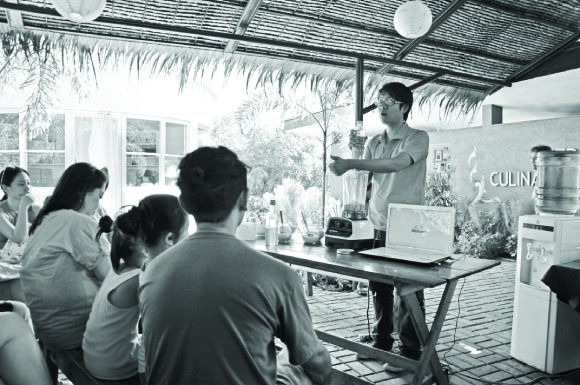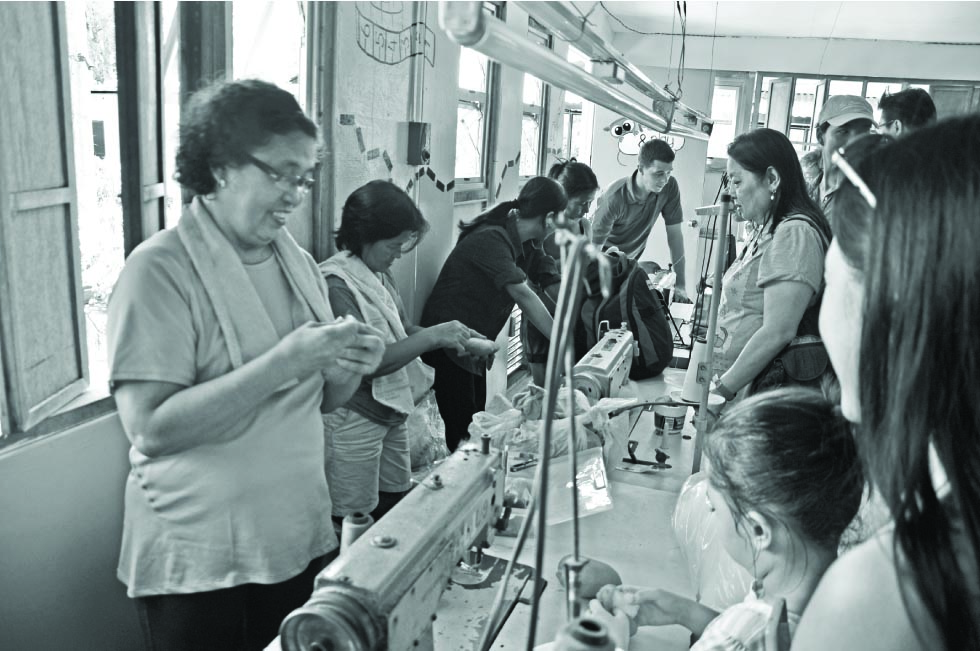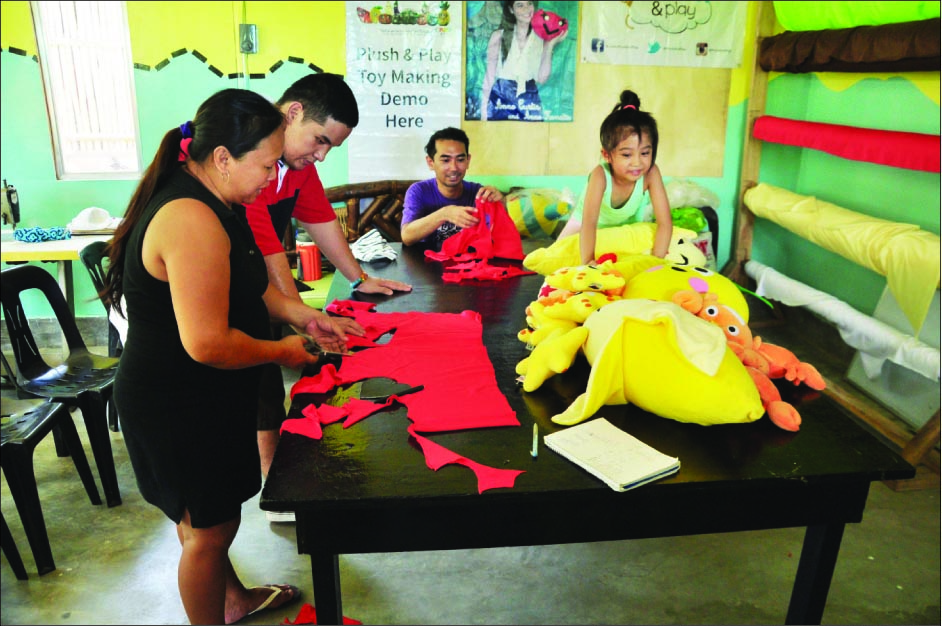There is a green jewel deep in the heart of Bulacan province, in Angat town.
An arch stretches above a country road. Beside it a large sign announces the traveler is approaching GK Enchanted Farm.
On May 17, 2015, I joined members of Kaisa Para Sa Kaunlaran to visit this community. It is unlike anything I have seen in the Philippines.
A 1.5-hour drive from Manila brought us to the Green Innovation complex. As we entered the complex, we headed to a building to the left. Made of bamboo, glass and cement, it was our first stop: we signed up for the farm tour here, and received an orientation.
We watched a video about Gawad Kalinga Community Development Foundation’s efforts to eradicate poverty and how Enchanted Farm supports this goal.

Afterwards, our guide Fabien Courteille briefly discussed our schedule and then we started with our tour.
Our first stop was the Arch Angel – GK Center for Arts and Culture. It hosts community gatherings and major events of the farm. Mural paintings and colorful tarps create an engaging vibe.
Courteille showed us a community of yellow and blue houses, home to families who tend the farm. These houses were built for the less fortunate and on the farm to simulate countryside living. It was in line with GK’s goal of helping the poor with decent housing and work opportunity.
The next three stops were the production areas of some of the social enterprises inside the farm. Bayani Brew is a version of iced tea made from either lemongrass or sweet potato leaves.
Next was where salted duck eggs, called Golden Eggs, are produced. Turmeric is used as coloring instead of red food dye.
Finally, we visited the Plush and Play area, where stuffed toys shaped like fruits and vegetables are on display. The toys are named after celebrities, such as Mannypakwan for Manny Pacquiao, Annekamatis for Anne Curtis and Apl de Ap, an apple whose leafy crown is exactly like the singer’s hair.

It was nice to see the innovation and passion these people have to ensure the success of these products.
We also visited the Bamboo Palace Center for Development Design. It is also used as a venue for weddings and team-building events.
We stopped by IASIS Health and Wholeness Center where they offer detoxifying food and drink, spa treatments and room accommodations.
After this, the real farm tour began with a visit to the horses, carabaos, ducks and sheep the farm raises. We even got to feed the goats. We also saw several planting areas for chili peppers, tomatoes, and lemongrass.
At noon, we feasted on the freshest farm produce from the Enchanted Farm. My personal favorite was the delicious fried squash-stuffed spring roll. I ate six of them!
The second half of the tour had live demos from two selected social enterprises of the farm. Our group was assigned to Plush and Play stuffed toys and First Harvest Peanut Spread.

Courteille founded Plush and Play. A Frenchman who has lived in the Philippines for four years, his love affair with the farm began when he helped out as a volunteer.
With his heart for social entrepreneurship, he started up Plush and Play to provide work for GK residents who sew.
Something to think about is how a Frenchman created a Philippine-designed and produced plush toy for the local and international markets.
Courteille said, he felt it was strange that a poverty alleviation effort is from a foreigner, and that it should have been Filipinos who thought of and embarked on this venture.
Everyone in our group was allowed to make a stuffed heart from beginning (cutting the cloth from a stencil) to end (stitching the cloth to close it). Everyone was happy to bring a stuffed heart home.
Our second social enterprise demonstration at First Harvest was about making peanut spread with honey. It is a paradox that with all our unused but arable land, we have to import peanuts. The demonstrator invited the children in our group to help.
The kids had fun as they helped founder Tajen Sui pour each ingredient into the blender to make the final product.
As the tour ended, everyone had a better appreciation of GK Enchanted Farm and what it is trying to achieve.
Indeed, the farm is on its way to helping our farmers gain a thriving livelihood, and developing the next set of social entrepreneurs for our country. — First published in Tulay Fortnightly, Chinese-Filipino Digest 28, no. 1-2 (June 16-July 6, 2015): 13.